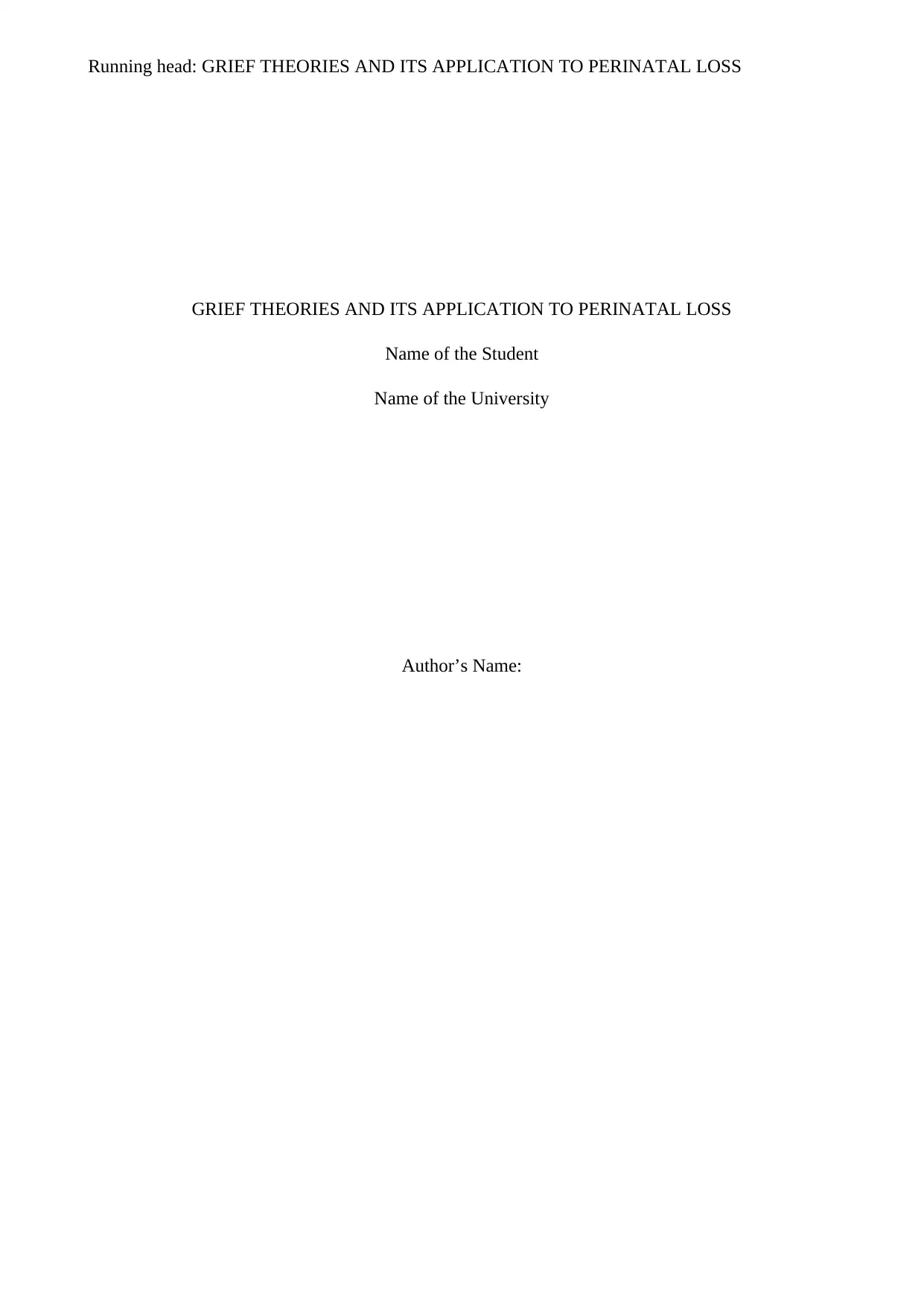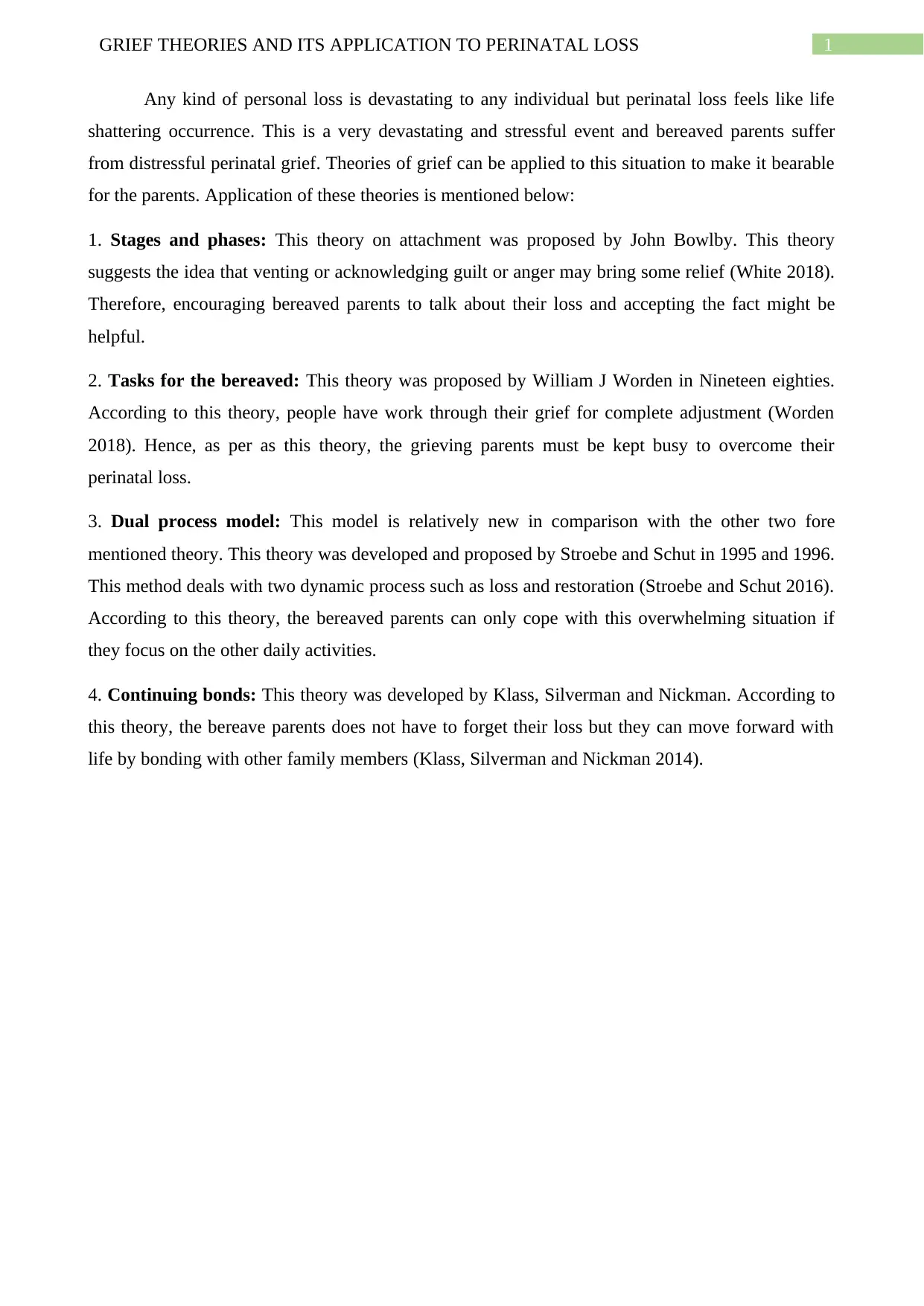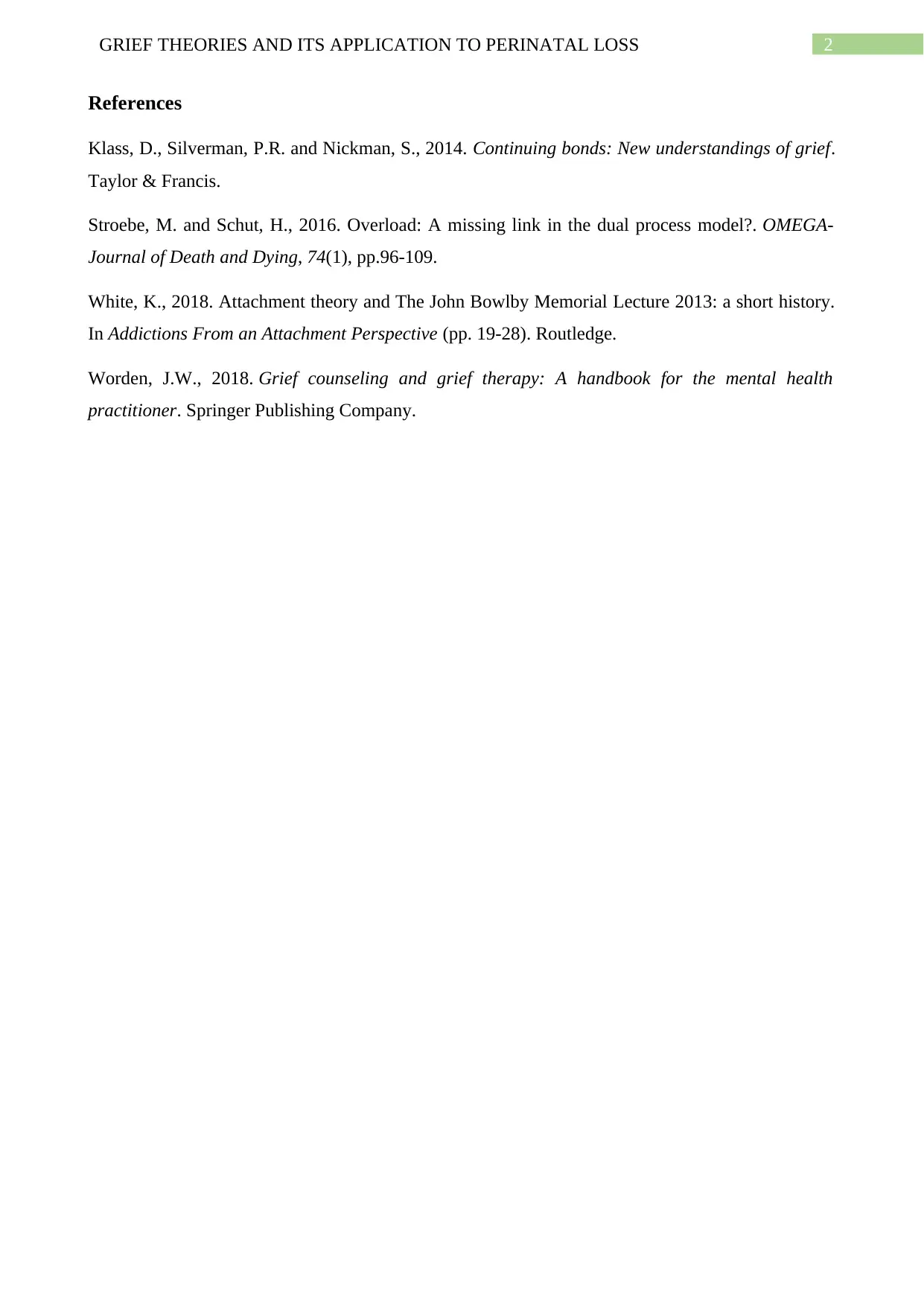Understanding Perinatal Loss Through Grief Theories Application
VerifiedAdded on 2023/04/25
|3
|478
|99
Essay
AI Summary
This essay explores the application of various grief theories to the specific context of perinatal loss, a deeply devastating experience for bereaved parents. It examines how theories such as Bowlby's attachment theory, Worden's tasks of mourning, Stroebe and Schut's dual process model, and Klass, Silverman, and Nickman's continuing bonds theory can be applied to understand and support individuals coping with this type of loss. The essay highlights the importance of acknowledging the loss, staying active, focusing on daily activities, and maintaining bonds with other family members as potential coping mechanisms for grieving parents. Desklib offers a wealth of similar resources for students.
1 out of 3









![[object Object]](/_next/static/media/star-bottom.7253800d.svg)